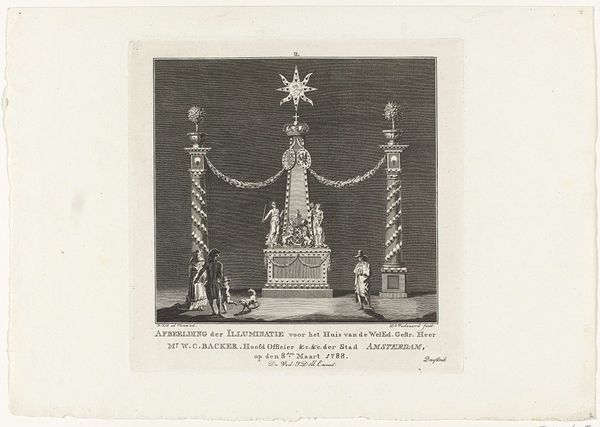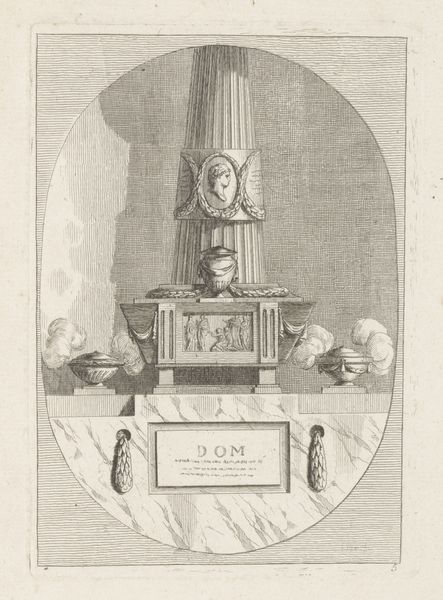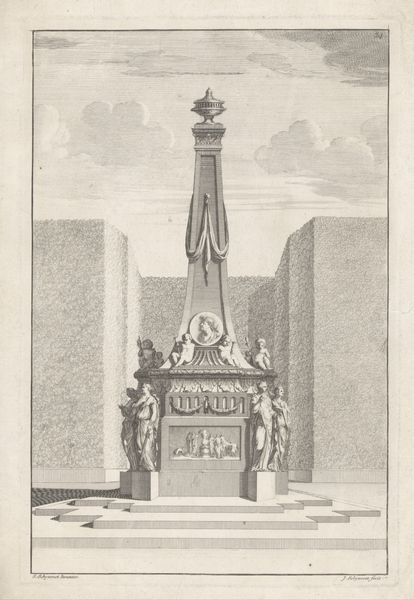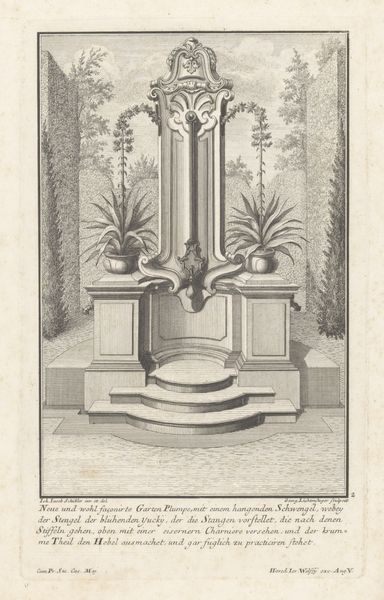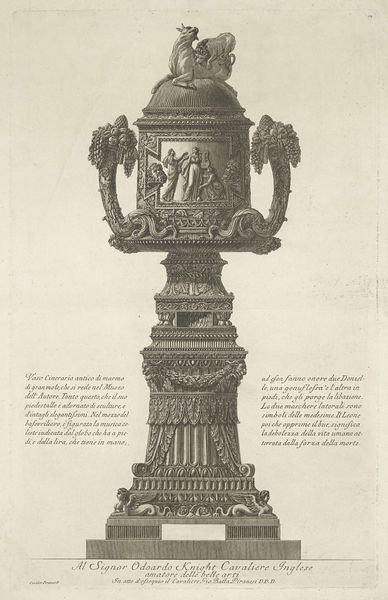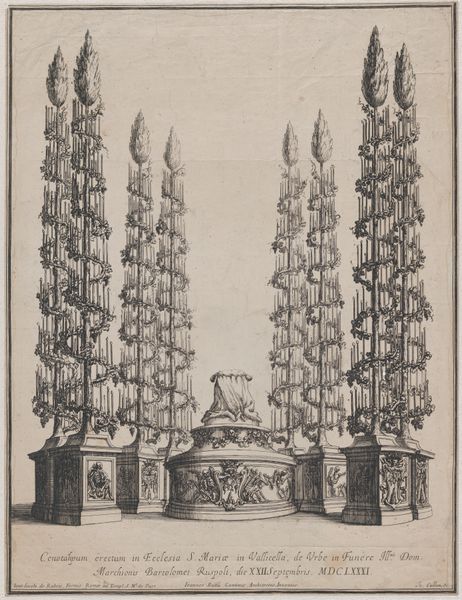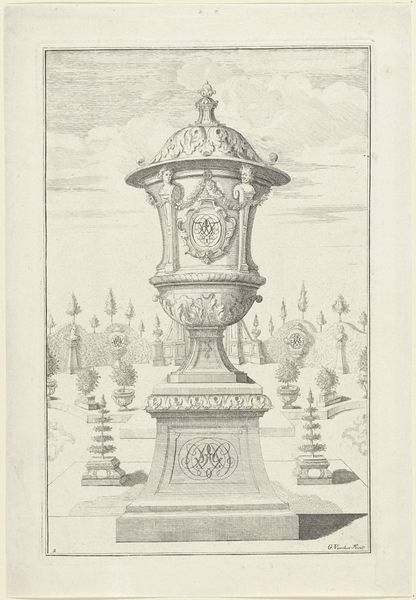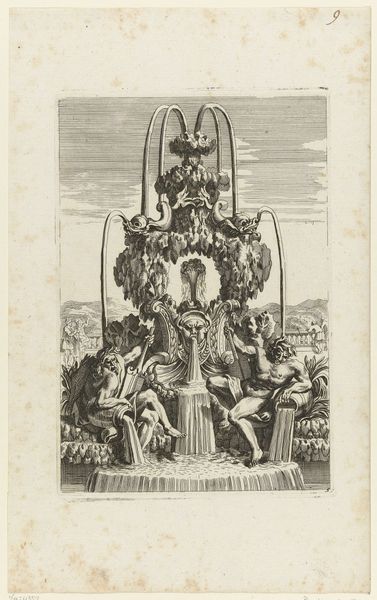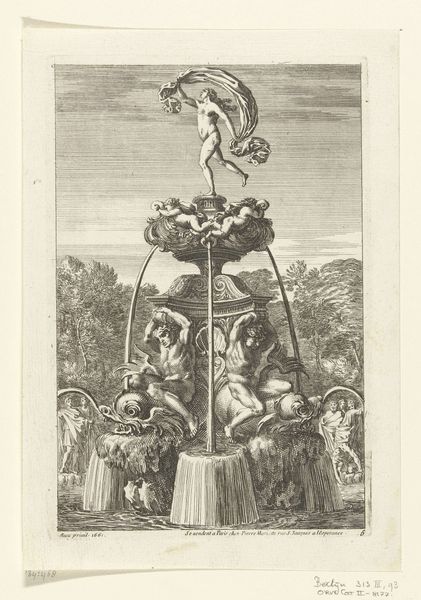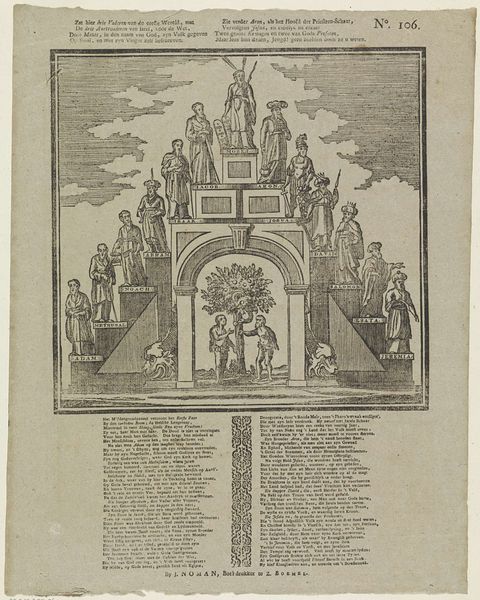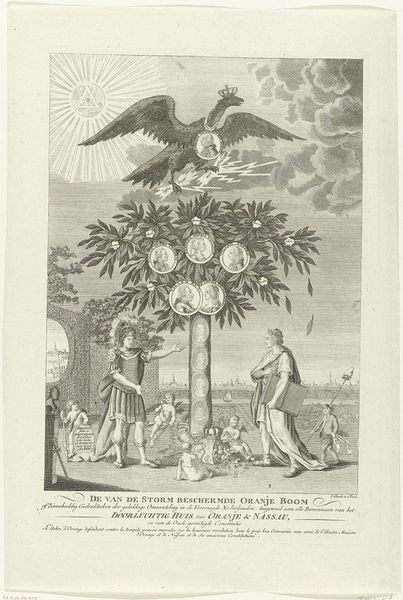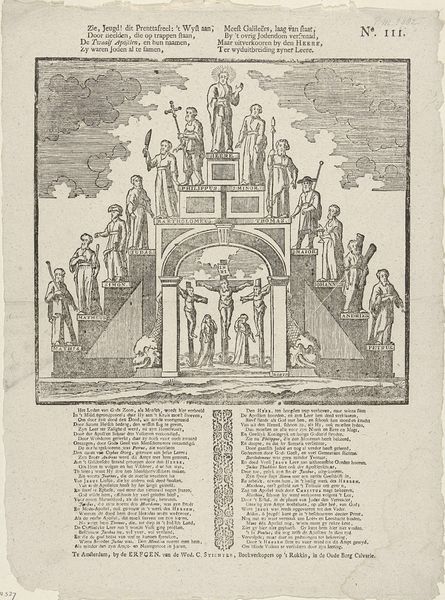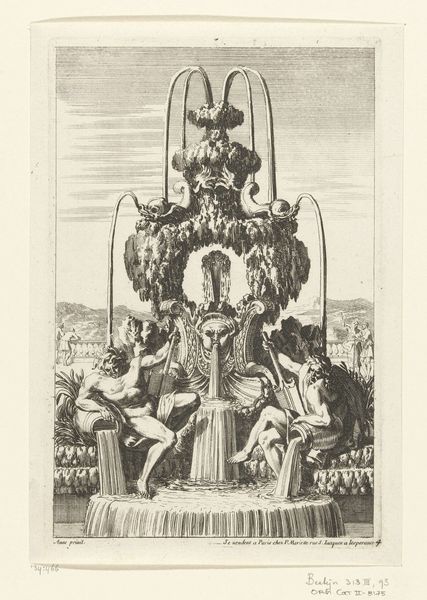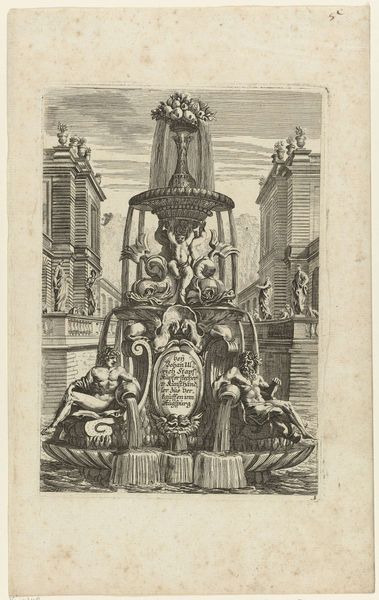
print, engraving
pencil drawn
neoclacissism
pencil drawing
cityscape
history-painting
engraving
Dimensions: height 431 mm, width 308 mm
Copyright: Rijks Museum: Open Domain
Editor: So, this is "Freedom Tree at Zaandijk, 1795" by Noach van der Meer the Younger, an engraving currently held at the Rijksmuseum. What immediately strikes me is the stark contrast between the detailed depiction of the townspeople and the almost ethereal rendering of the 'Freedom Tree' itself. What do you see in this piece? Curator: The Freedom Tree, as it was symbolically planted, really speaks to the broader social upheaval following the French Revolution. It’s not just a depiction of a tree, but of civic ritual. Do you notice anything interesting about the classical architectural elements paired with what is essentially a maypole? Editor: Now that you point it out, yes! It feels a bit like a merging of tradition and the new revolutionary ideals. A maypole evokes a communal and slightly pagan feel, but it's placed atop this very proper, almost Roman, column. Was this meant to signal something about the new political order? Curator: Precisely. It's this tension – the classicism acting as a visual anchor to legitimacy while the tree represents liberty – that encapsulates the aspirations of the Batavian Republic. And that "all seeing eye" towards the top? Editor: Oh, yes. An eye within a triangle, casting sunbeams. It suggests enlightenment ideals, reason... Is it suggesting that the Revolution is divinely ordained? Curator: Perhaps. It definitely reinforces a sense of overarching, almost deistic, approval. The public role of art, here, is crucial. It aims to solidify public support for this new political imagery, attempting to create a unified and hopeful narrative. What do you think of that narrative after seeing it this way? Editor: Seeing the visual symbolism – how classical and folk elements come together – it speaks volumes about how carefully constructed these displays of revolutionary sentiment actually were. I see the blend of power and the people. It isn't as spontaneous as it might seem at first glance! Curator: Exactly. Analyzing the socio-political currents shaping artistic production reveals just how intentional and powerful these seemingly simple images could be. It's the politics of imagery in action.
Comments
No comments
Be the first to comment and join the conversation on the ultimate creative platform.
